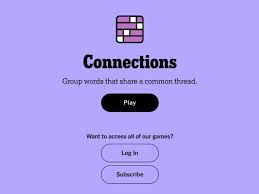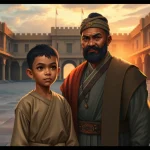
What is NYT Connections?
NYT Connections is a word puzzle game developed by The New York Times, released in its beta phase on June 12, 2023. Players categorize 16 words into four groups based on a shared connection, ranging from straightforward to obscure. Each correct group reveals the category and its difficulty level, which can be yellow, green, blue, or purple. It draws inspiration from British quiz shows like “Only Connect” and includes wordplay elements such as palindromes and homophones, which add to its difficulty. For April Fools’ Day in 2024, the game uniquely featured emojis instead of words.
How to Play NYT Connections
-
Grid Layout: Players receive 16 words arranged in a 4×4 grid.
-
Objective: Group the words into four hidden categories by identifying common connections.
-
Guessing: You have four chances to submit correct groupings. Incorrect guesses will reduce your remaining chances.
Advanced Strategies for NYT Connections
Brush Up Your Trivia & Vocabulary
-
Enhance your general knowledge and familiarity with pop culture to quickly recognize connections.
-
Example: Knowing that Alfred Hitchcock, Wes Craven, and John Carpenter are all famous horror directors can help you spot a theme in a puzzle.
-
Watch Out for Ambiguous Words
-
Many words may relate to multiple categories. Take time to consider different meanings and contexts.
-
Example: “Saw” can refer to a tool or the horror movie franchise, affecting its grouping.
-
-
Your Guesses Are Precious
-
With only four chances, use your guesses wisely. Carefully consider each grouping before submitting.
-
Example: If you identify three solid words for a category, spend time confirming the fourth before guessing.
-
-
Shuffle the Words
-
The initial word placement is often misleading. Use the shuffle button to see new connections.
-
Example: Shuffling might reveal that “Dog” and “Cat” should be grouped with “Fish” and “Parrot” as pets.
-
-
Categorical Thinking
-
Quickly scan words and mentally group them into categories like professions, emotions, or colors.
-
Example: Group “Happy,” “Sad,” “Angry,” and “Excited” as emotions.
-
-
Elimination Process
-
Use process of elimination to narrow down potential groupings. Remove words that clearly don’t fit together.
-
Example: If “Apple,” “Banana,” and “Cherry” fit a fruit category, eliminate unrelated words like “Car” and “Book.”
-
-
Utilize Contextual Clues
-
Look for both literal and figurative connections. Ambiguous words might fit into different categories.
-
Example: “Bark” can be a tree’s outer layer or a dog’s sound, requiring careful consideration.
-
-
Maximize Your Guesses
-
Use feedback from incorrect guesses to refine choices. Adjust groupings based on “one word off” hints.
-
Example: If “Doctor,” “Nurse,” and “Surgeon” fit but “Teacher” does not, reconsider “Teacher” and find a better match.
-
-
Mental Flexibility
-
Stay open to new ideas and ready to pivot strategies. Reflect on mistakes to improve future gameplay.
-
Example: If you keep grouping “Sun” with “Star” incorrectly, consider “Sun” might belong with “Moon” and “Planet” instead.
-
Valuable Resources for NYT Connections
-
Word Tips: Provides daily hints and structured answers. Offers detailed breakdowns of categories.
-
Mashable: Regularly updates with hints and strategies. Offers insights into game mechanics.
-
Reddit r/NYTConnections: Engages players in discussions, shares hints, and provides solutions. Posts about end game strategies, shuffling techniques, and community-driven tips.





